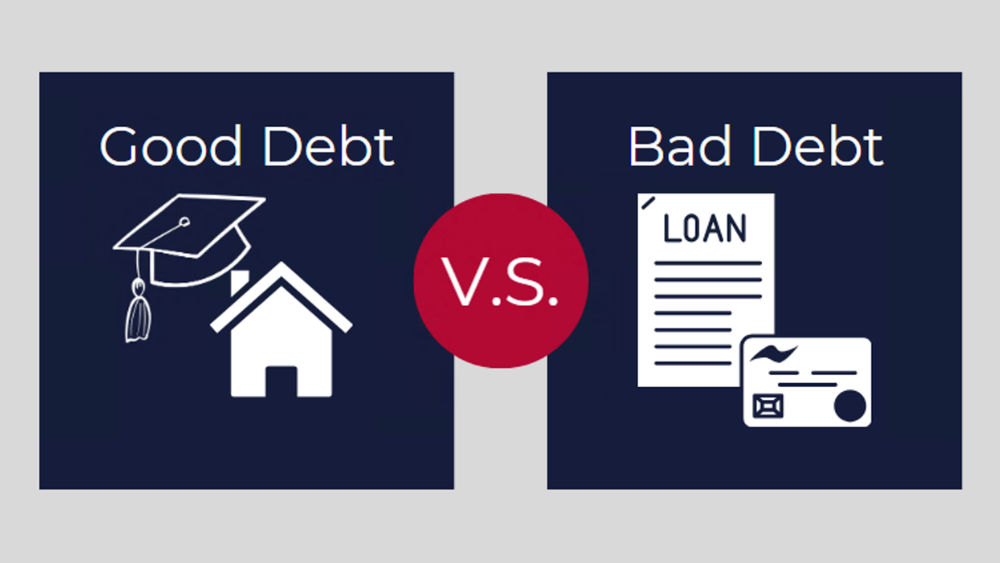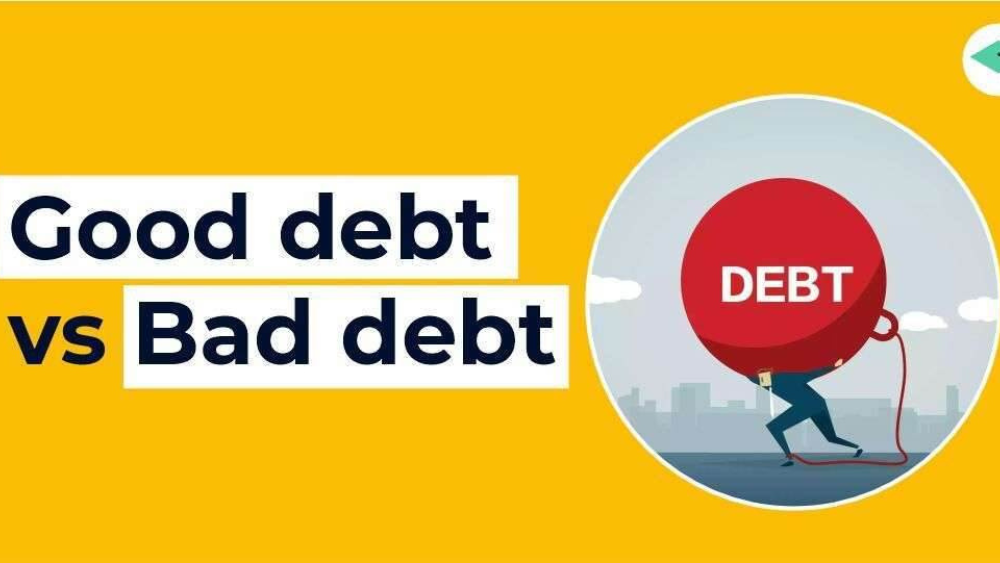Everything you need to know about good debt v/s bad debt. Differences between good debt and bad debt. Examples of good debt. Examples of bad debt.
Table of Contents
Introduction
You might not particularly be happy when thinking about debt, but it is very important to make your basics clear. One aspect of debt is the difference between good debt and bad debt. The notion behind good debt versus bad debt is that not all loans are created equal. In this article, we will look at the fundamental differences between these two types of debt, how they affect your financial well-being, and tactics for properly managing and leveraging debt.
Understanding Good And Bad Debt
What is a good debt?
Good debt is debt used to purchase assets or investments with the potential to increase in value or create income over time. It has the potential to lead to long-term financial growth and wealth-creation opportunities. Good debt is frequently regarded as an investment in one’s future financial well-being. It is commonly defined as any debt that may assist you in increasing your net worth or generating future income. Importantly, it usually has a low-interest rate or annual percentage rate (APR), which our experts indicate is usually less than 6%.
What is a bad debt?
Debt incurred for the acquisition of depreciating goods, non-essential items, or high-interest loans with little or no return on investment is referred to as bad debt. Bad debt frequently causes financial distress and can impede your potential to accumulate money. Bad debt is utilized to finance purchases that will not add to your net worth or future earnings. In some circumstances, the loan may be used to purchase depreciating assets. Bad debt frequently has a high-interest rate now or a variable rate that could rise in the future, which means you’ll end up paying a premium for products that are worth less over time.
Examples Of Good Debt And Bad Debt
Good Debt
Mortgages: Mortgages are seen as “good debt” by lenders because they are secured by the value of your home, lenders view your capacity to make mortgage payments as evidence of responsible credit use. They also associate home ownership, even partial ownership, with financial stability.
Student Loans: Many students take out student loans to pay for college. Student loans are commonly regarded as a sort of positive debt because they increase your earning potential and employability. Some people view student debt to be an investment in your future.
Home Equity Loans: Home equity loan interest rates are much lower than rates on many other types of debt. If you can only afford a limited amount each month to pay off debt, taking out a home equity loan to pay down loan balances can help you settle debt faster. Many people use home equity loans to pay off higher-interest obligations like credit cards. Some people use it to make house renovations such as solar panels, which can help them save money on utility costs while also increasing the value of their home.
Bad Debt
Credit Cards: Credit card debt is classified as a bad debt due to the high-interest rates and low minimum payments, as well as the fact that it is not used to purchase appreciating assets. Use your credit cards for the points and other benefits, but make sure you pay off the debt each month.
High-Interest Loans: A loan is often deemed bad debt if it is borrowed to purchase a depreciating asset. According to our specialists, high-interest loans have an interest rate or APR of 6% or above. You can come across them in the shape of payday loans or specific personal loans. These loans may be difficult to repay, making them even more expensive as interest compounds and grows.

The Final Takeaway
In conclusion, we can differentiate between good debt and bad debt as follows:
- Long-term affordability of good debt is increased by the fact that it frequently has lower interest rates. In contrast to credit card debt, mortgages, and student loans often have lower interest rates. On the other hand, bad debt frequently has outrageous interest rates that might cause your debt to grow rapidly. Payday loans, credit card debt, and other personal loans are typical instances of high-interest bad debt.
- Generally speaking, good debt is used to purchase assets that could appreciate in value over time and raise your net worth. Whereas, bad debt, is frequently accrued for non-essential, depreciating purchases—luxury goods, trips, or frequent dining out—that neither produce income nor increase in value.
- Certain forms of good debt, such as interest on student loans or mortgages, may be tax deductible, offering further financial advantages. Bad debt, in contrast to this, usually has no tax benefits. For instance, interest paid on credit card debt is typically not tax deductible.
Conclusion
In conclusion, understanding the difference between good debt and bad debt is crucial for making informed financial decisions. Good debt, such as mortgages or student loans, can lead to long-term wealth and opportunities, while bad debt, often associated with high-interest credit cards and unnecessary purchases, can hinder your financial progress. By assessing your debts and prioritizing those that contribute positively to your financial future, you can build a stronger foundation for your financial well-being. Remember, it’s not just about having debt; it’s about using it wisely to achieve your goals.
By watchnewz
Frequently Asked Questions
What are examples of good debt?
Taking out a mortgage, purchasing items that save you time and money, purchasing critical items, investing in yourself by borrowing for more education, or consolidating debt are all examples of good debt. Each will put you in a bind at first, but you’ll be better off in the long run because you borrowed the money.
What is a terrible debt example?
One of the most prevalent forms of bad debt is credit card debt. Lenders issue credit cards, which let you make purchases using credit.
What is the value of a bad debt?
The bad debt ratio calculates how much of a company’s net sales must be written off as bad debt expenses. It can be computed by multiplying the total accounts receivable for a given time by 100 and then dividing the result by the amount of bad debt.
